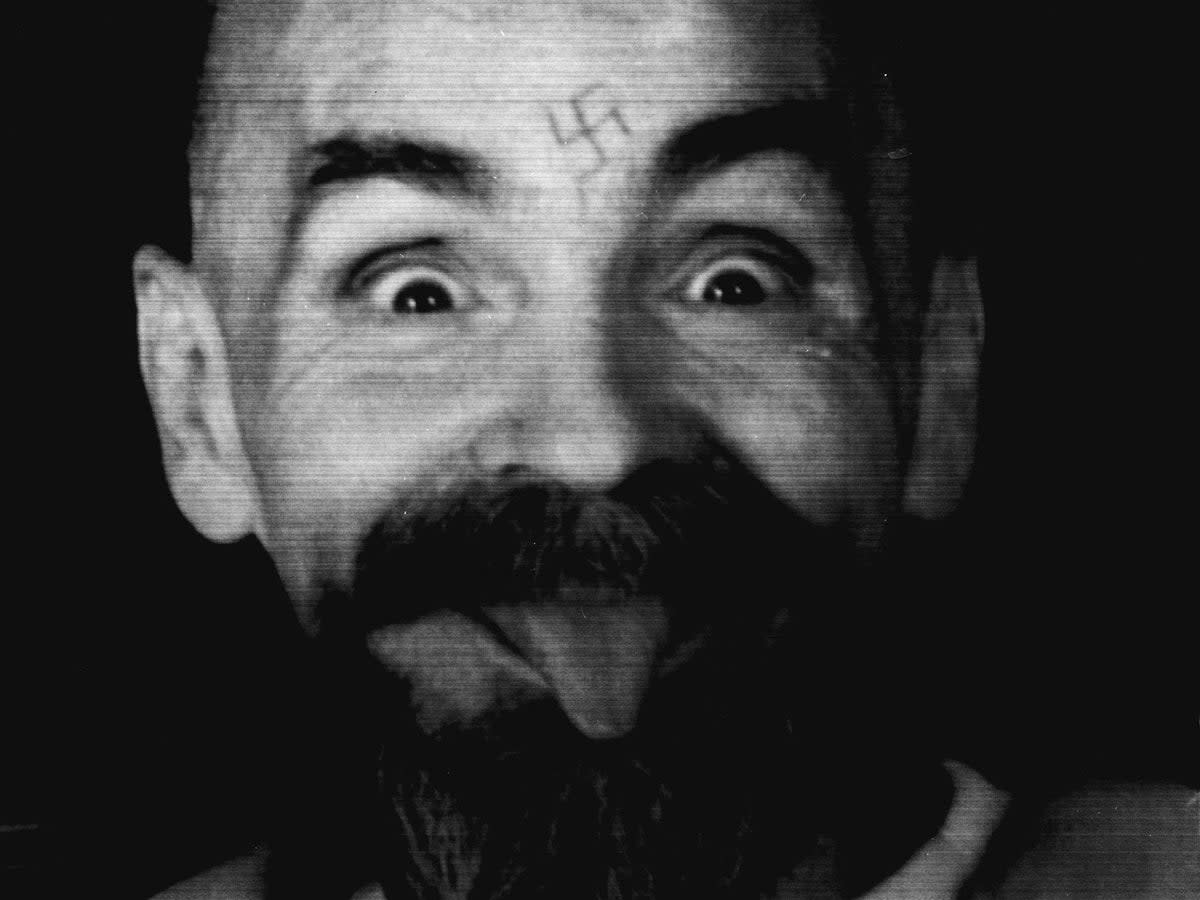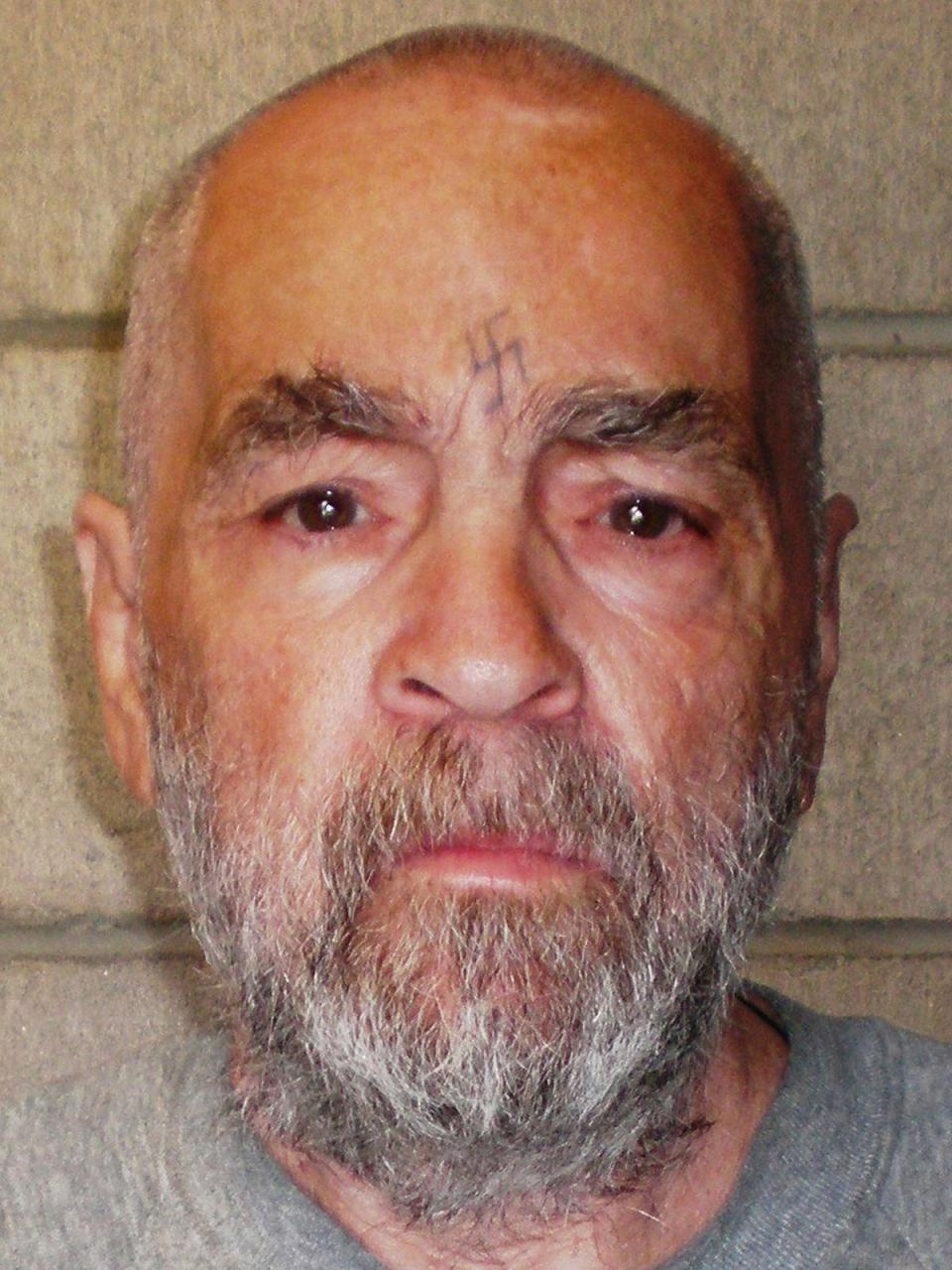Charles Manson: Who was the infamous cult leader and what did he do?

Charles Manson, the cult leader who orchestrated a string of gruesome murders by his “Family” of young acolytes in Los Angeles during the momentous summer of 1969, died aged 83 on 19 November 2017 after suffering a cardiac arrest arising from colon cancer but the legacy of his crimes continues to play out.
Earlier this year, Linda Kasabian, the gang’s getaway driver who became a key prosecution witness at Manson’s trial in 1970-71, passed away in Tacoma, Washington, aged 73, going to her grave claiming to a feel a unique sense of guilt about her notorious past.
On Tuesday, another Manson Family member, Leslie Van Houten, who had spent 53 years behind bars for her part in the murders of Leno and Rosemary LaBianca was released from prison after California governor Gavin Newsom dropped his opposition to a state appeals court ruling that recommended her parole, against the wishes of surviving members of her victim’s families.
Those developments followed a revival in interest in the Manson Family murders in the wake of Charles Manson’s death at Kern County Hospital in Bakersfield, California, in part thanks to the true crime podcast boom and the popularity of the films Charlie Says (2018) in which Matt Smith played the cult leader and Quentin Tarantino’s revisionist take on the killings Once Upon a Time in Hollywood (2019), in which he appears only briefly, played by Damon Herriman.
At the time of his death, Manson had been serving a life sentence at the nearby Corcoran State Prison for ordering the murders of nine people, most famously the actress Sharon Tate, partner of the Polish film director Roman Polanski, who was pregnant at the time.
Who was he?
Born Charles Milles Maddox on 12 November 1934, in Cincinnati, Ohio, to a 16-year-old mother, Manson spent much of his adolescence shuttled between relatives and juvenile detention halls.
By age 13, he had been convicted of armed robbery.
By the advent of the Sexual Revolution of the 1960s, the charismatic, guru-like Manson, a frustrated aspiring pop star who had befriended Beach Boy Dennis Wilson, had surrounded himself with a collection of runaways and other lost souls, whom he duly sent out to butcher LA’s rich and famous in what prosecutors said was a bid to trigger a race war — an idea he said he got from a twisted interpretation of the Beatles song “Helter Skelter” from The White Album.
The slayings that took place across the “two nights of mayhem” in August 1969 horrified the world and, together with the deadly violence that erupted later during a Rolling Stones concert at California’s Altamont Speedway, exposed the dangerous, drugged-out underside of the counterculture movement and seemed to mark the sad demise of the era of “peace and love” once and for all.
Despite the overwhelming evidence against him, Manson maintained during his tumultuous trial that he was innocent and that society itself was guilty.
“These children that come at you with knives, they are your children. You taught them; I didn’t teach them. I just tried to help them stand up,” he said in one courtroom monologue.
How did he gain his notoriety?
The Manson Family, as his followers were known, slaughtered five of its victims on 9 August 1969 after invading Tate's home during a dinner party.
The victims where the actress herself, who was eight months pregnant at the time, coffee company heiress Abigail Folger, celebrity hairdresser Jay Sebring, Polish movie director Voityck Frykowski and Steven Parent, a friend of the estate’s caretaker.
Polanski, at the time known as the celebrated director of Knife in the Water (1962), Repulsion (1965) and Rosemary’s Baby (1968), was out of the country at the time.
The next night, a wealthy grocer and his wife, Leno and Rosemary LaBianca, were stabbed to death in their home across town.
The killers scrawled phrases such as “Pigs” and “Healter Skelter” [sic] in blood at the crime scenes.
Three months later, a Manson follower was jailed on an unrelated charge and told a cellmate about the bloodbath, leading to the cult leader’s arrest.
Manson was also later convicted of the slayings of musician Gary Hinman and stuntman Donald “Shorty” Shea.
Why did he carve an ‘X’ into his forehead?
Denied his request to represent himself during his 9 ½ month trial, Manson showed up in court with an “X” carved into his forehead and would later amend it to form a Nazi swastika.
Co-defendants Susan Atkins, Van Houten and Patricia Krenwinkel subsequently cut “X’s” into their own foreheads, shaved their scalps, sang Manson-written songs and giggled throughout their chilling testimony.

His trial was almost scuttled when then-US president Richard Nixon said Manson was “guilty, directly or indirectly”.
Arguing that he had been unfairly pre-judged, Manson grabbed a newspaper and held up the frontpage headline for jurors to read: “Manson Guilty, Nixon Declares.”
Attorneys demanded a mistrial but were turned down.
At one point, Manson tried to leap over the defence table at the judge, snarling: “In the name of Christian justice, someone should cut your head off.” The judge began carrying a gun thereafter.
How long was he in prison?
After the trial, which lasted nearly a year, Manson and three of his followers – Atkins, Krenwinkel and Van Houten – were found guilty of murder and sentenced to death.
Another defendant, Charles “Tex” Watson, was convicted later. All were spared execution and given life sentences after the California Supreme Court struck down the death penalty in 1972.
Over the decades, Manson and his followers appeared sporadically at parole hearings, where their bids for freedom were repeatedly rejected. The women suggested they had been rehabilitated but Manson himself stopped attending after 1997, saying prison had become his home.
What are some of his most chilling quotes?
One of Manson’s most hair-raising remarks comes from an interview in which he was asked to describe himself in one sentence.
Leaping forward in his chair, the cult leader giggled, arched his eyebrows and pulled faces like a goblin before responding: “Nobody.”
After taking a pause for dramatic effect, he continued: “I’m nobody. I’m a tramp, a bum, a hobo. I’m a boxcar and jug o’ wine. And a straight razor, if you get too close to me.”
After serving a 10-year sentence for cheque forgery in the early 60s, he was said to have pleaded with authorities not to release him, because he considered prison home.
“My father is the jailhouse. My father is your system,” he would later say in a monologue on the witness stand.
“I am only what you made me. I am only a reflection of you.”
Was he any relation to Marilyn Manson?
Brian Hugh Warner, the musician better known for his controversial stage personality under the name Marilyn Manson, formed his moniker by juxtaposing two American pop culture icons: Charles Manson and Marilyn Monroe.

Beyond adopting the name as a shock tactic, there is no further connection between the two.
Similarly, Leicester indie band Kasabian took its name from the Manson Family member of that name.
Additional reporting by agencies

 Yahoo News
Yahoo News 
